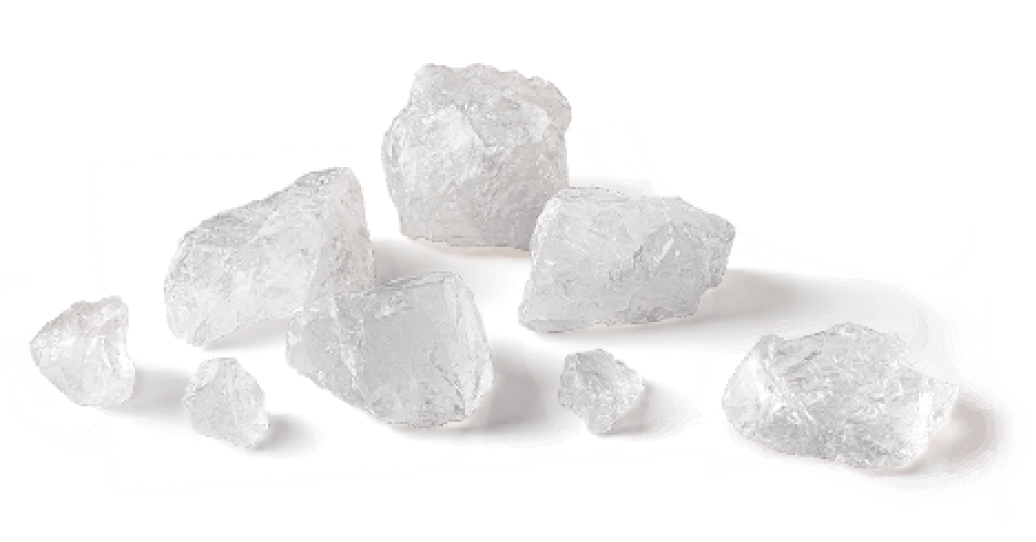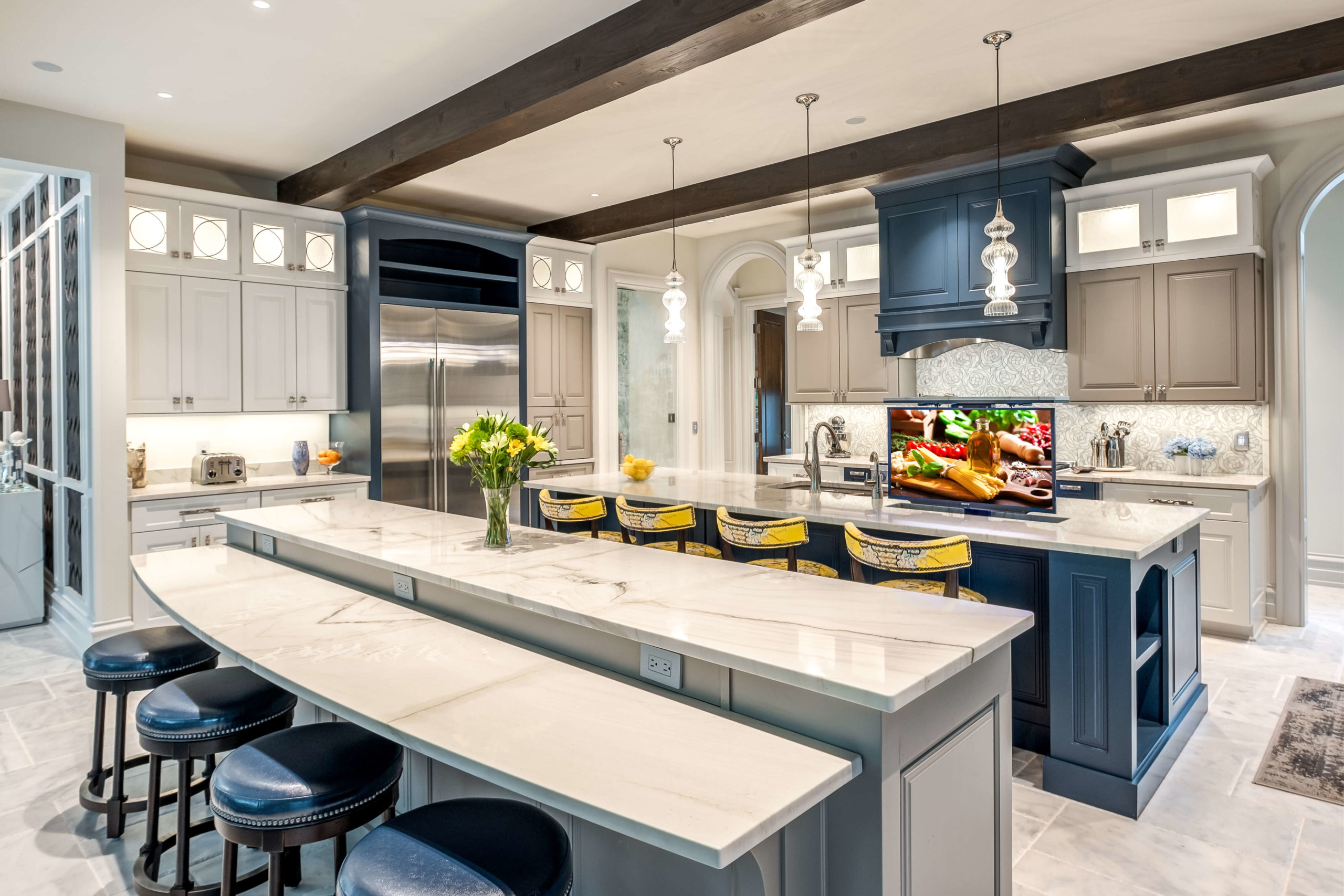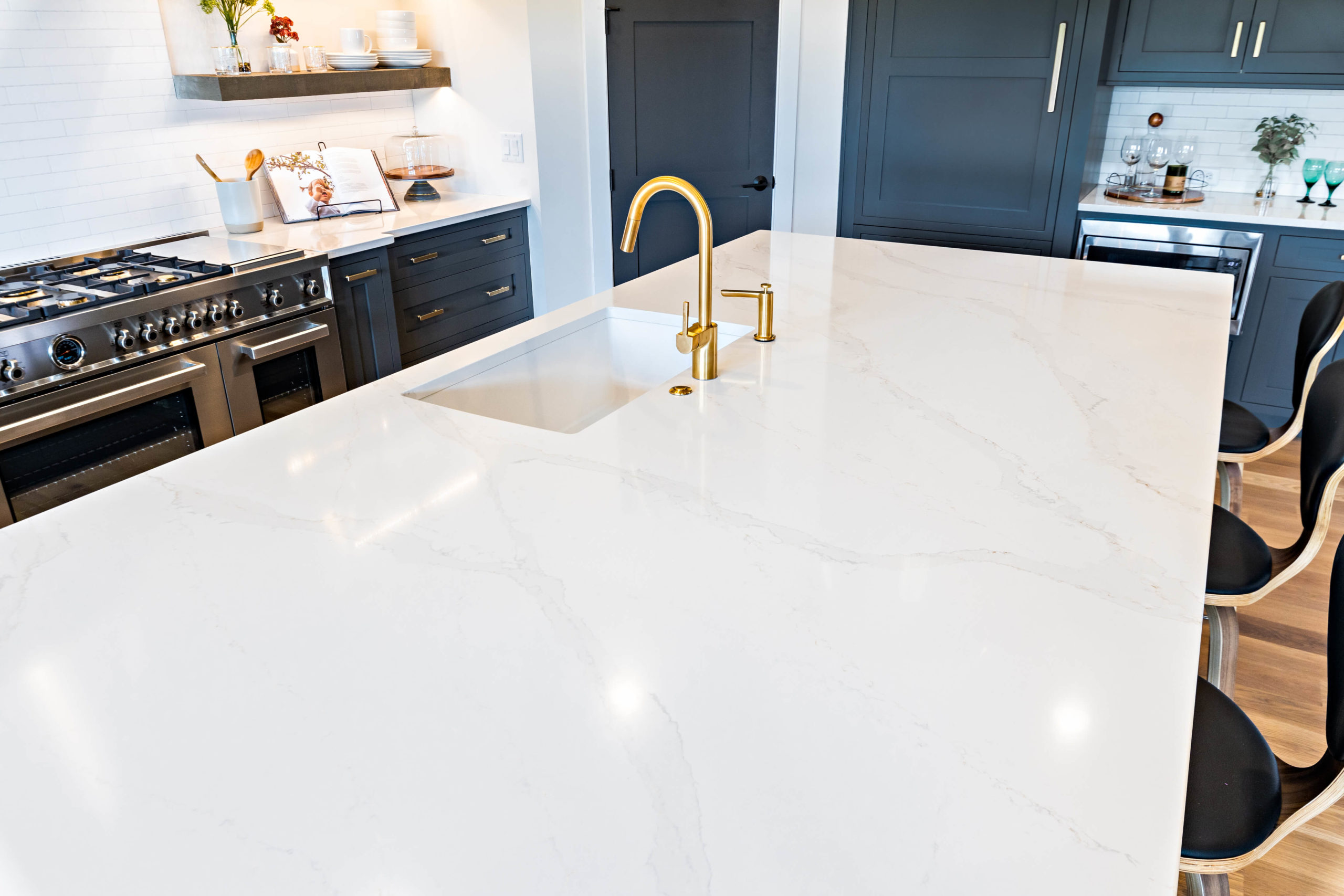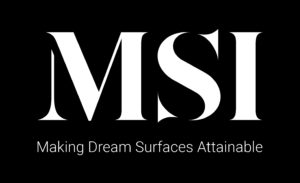How are Quartz Countertops made?

Engineered Quartz is generally created through a manufacturing process that mixes approximately 95 percent ground natural quartz with 5 percent polymer resins. The result is a super-hard, low-maintenance, natural stone-look countertop available in a dazzling array of colors. Small amounts of glass or metallic flecks can also be added to create variety, resulting in beautiful countertops. For many homeowners choosing Quartz, those virtually unlimited color options are what sold them.
Process:
Quartz countertops allow for a variety of edging options, just like natural stone. Unlike stone, engineered Quartz also offers other design possibilities. Because it’s more flexible to work with and is held in place using glue and epoxy instead of screws, quartz can be used on larger vertical surfaces like backsplashes and even shower enclosures, without the fissures and seams often all too visible with natural stone. That durability transfers to quartz countertops making the material difficult to scratch or chip. The material is less hard and formal than marble or granite, softening the overall feel of the kitchen countertop.
There are more than 80 different colors and three luxurious textures, polished, volcano, and suede. It is the perfect option for indoor countertop surfaces. The unique characteristics make this material resistant to almost any conditions, combining beauty and functionality in a space that becomes the main feature in your home.
Read another related article for more information on the differences.





